Let’s be honest, AI in creative writing and art is a highly polarizing topic right now. No matter which side of the fence you’re on when it comes to AI, it’s rising fast, and with it come a lot of mixed feelings. Some people are excited, others are anxious, and many creatives feel like their work might be devalued or replaced entirely. I totally get it. It’s scary. AI can pump out images, stories, even music with the click of a button, and that raises a lot of questions about what it means to be an artist or writer in this new landscape.
But here’s how I see it:
AI isn’t here to replace us. It’s a new tool, like a pen, a paintbrush, or a computer. If we learn how to work with it rather than against it, it can actually help us grow as creators.
That said, I also think it’s important to stay realistic. AI, if misused, genuinely can threaten creative jobs and entire industries. And unfortunately, we’ve already seen examples of that happening. So while I remain optimistic about its potential, I think it’s crucial that we approach it with caution, making sure we’re using it in ways that support creative work, not undermine it. The key is to stay grounded in what makes us human while figuring out how to use AI in ways that elevate our art, not erase it.
- AI is Not a Replacement, It’s a Tool
- Embrace AI for Inspiration, Not Imitation
- Avoid Relying on AI for Every Step
- Use AI to Polish, Edit, and Refine
- Don’t Fear the Technology
- Keep the Human Element Alive
- Acknowledging the Ethical Concerns
- Mimicry, Learning, and the Artist’s Journey
- Final Thoughts
AI is Not a Replacement, It’s a Tool

There’s this fear floating around that AI is going to wipe out human creativity altogether. But let’s be honest, AI can’t replicate our life experiences, emotions, or point of view. It can’t feel joy or heartbreak. It doesn’t have memories or dreams. So while it might generate text or visuals, it can’t create the same way we do.
That’s why I like to think of AI as a tool. Just like a typewriter didn’t replace authors or digital art programs didn’t replace traditional painters, AI is just another addition to our toolbox. When used right, it can help us brainstorm, save time on repetitive tasks, and unlock ideas we might not have thought of on our own.
Embrace AI for Inspiration, Not Imitation
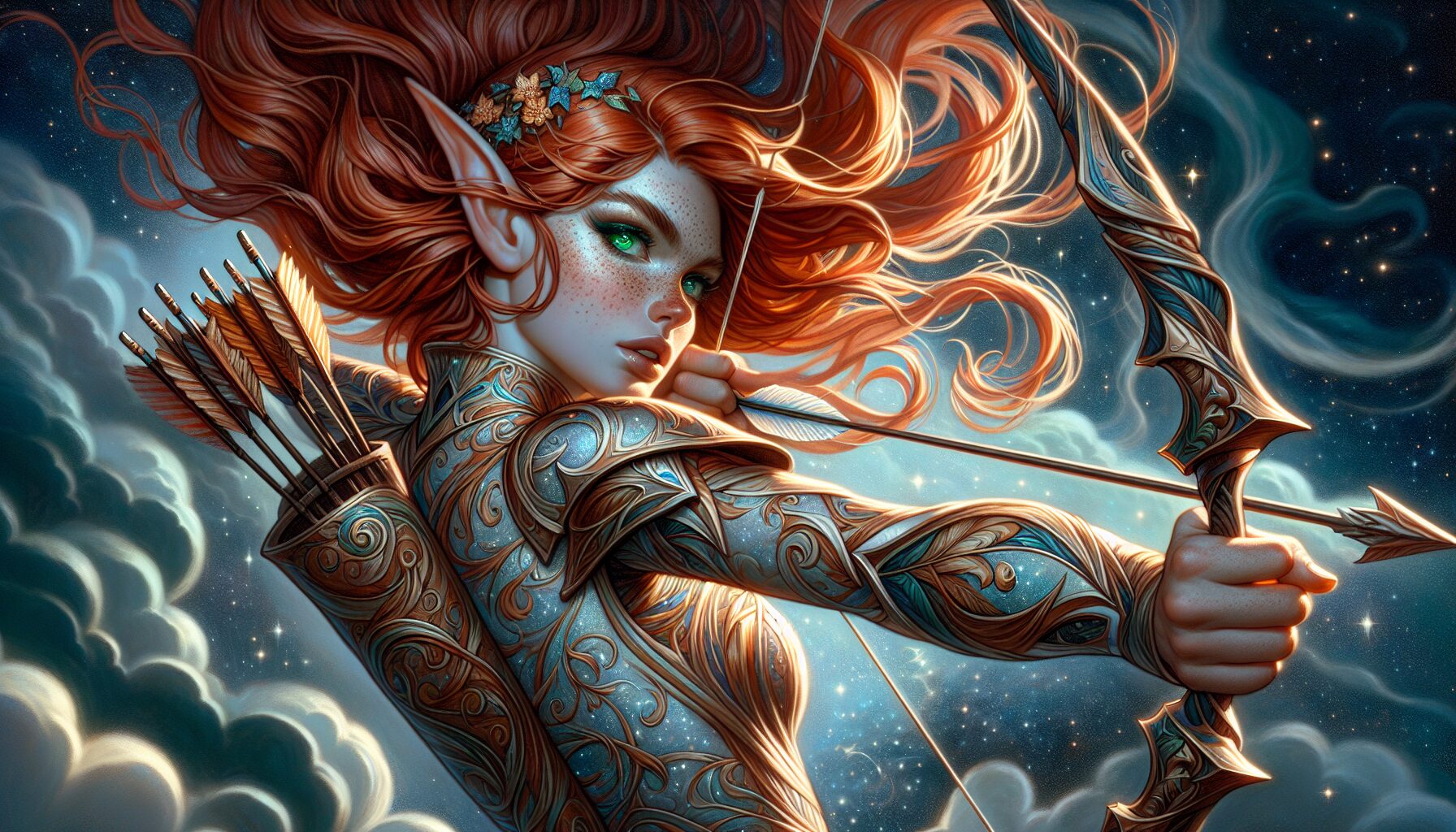
One of the coolest ways I’ve seen AI help is by getting people past creative blocks. Whether it’s suggesting a plot twist or generating a visual layout, AI can nudge your brain in a fresh direction when you’re stuck. But it’s not about letting it do the work for you. It’s about using it to get your own ideas flowing.
Say you’re writing and you need help fleshing out a character. AI can throw out traits, motivations, maybe even dialogue. Or maybe you’re drawing and need a quick idea to build from. AI tools can offer references that spark something new. It’s a launchpad, not the final destination.
That inspiration comes with a responsibility to keep your creativity at the center.
Avoid Relying on AI for Every Step
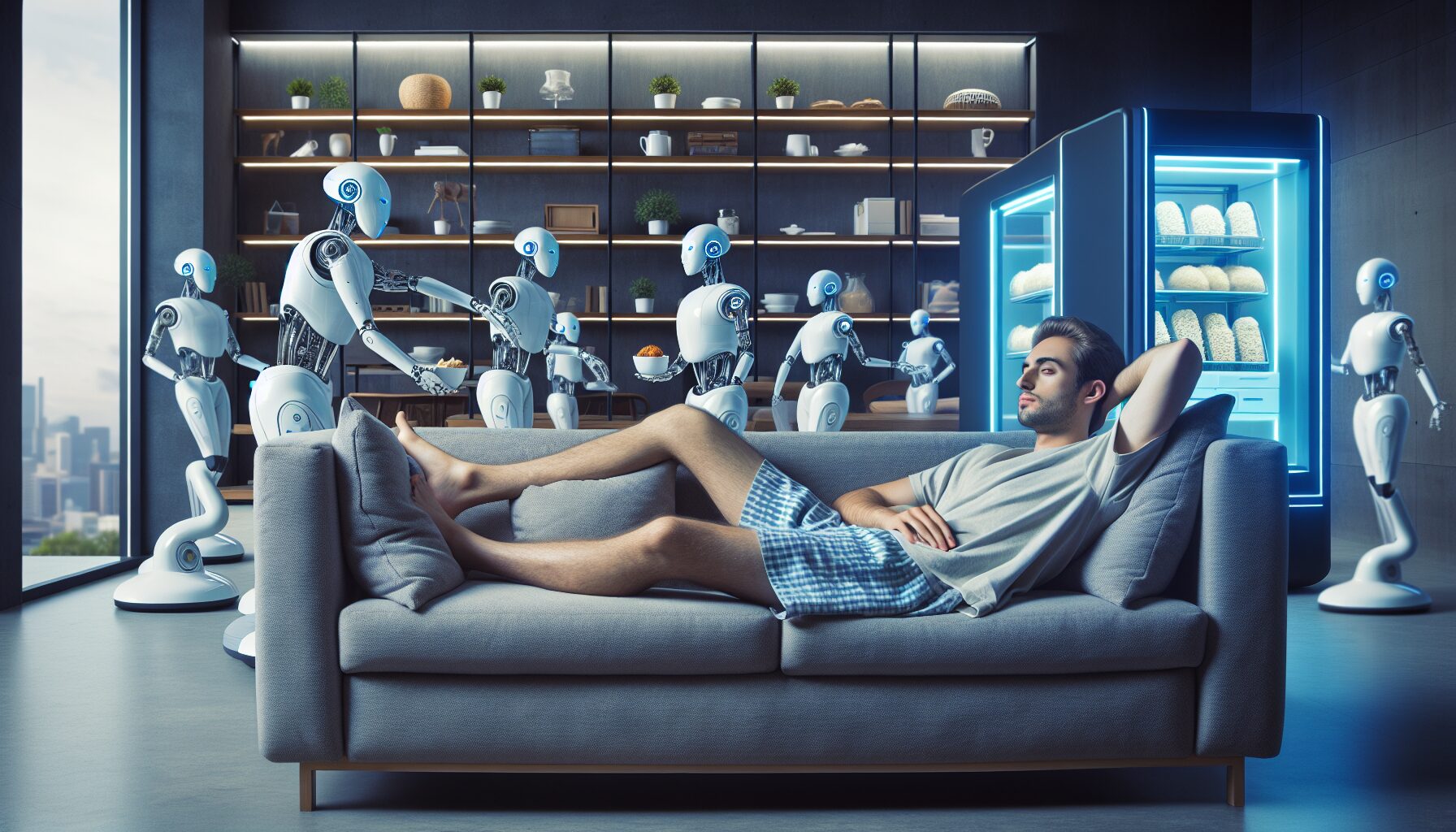
It’s tempting to let AI do the heavy lifting. I’ve seen it happen where people use AI to generate entire stories or images with barely any input. And while that might seem efficient, it kind of misses the point of creating.
Our growth as artists and writers comes from the messy, challenging parts: the drafts, the redos, the figuring-it-out moments. If we lean too much on AI, we risk skipping all of that and losing our voice. So I say, use it to get started or to help polish, but make sure your own voice and effort shine through.
Think of AI like a co-pilot. It can help you steer, but you’re still the one flying the plane.
Use AI to Polish, Edit, and Refine
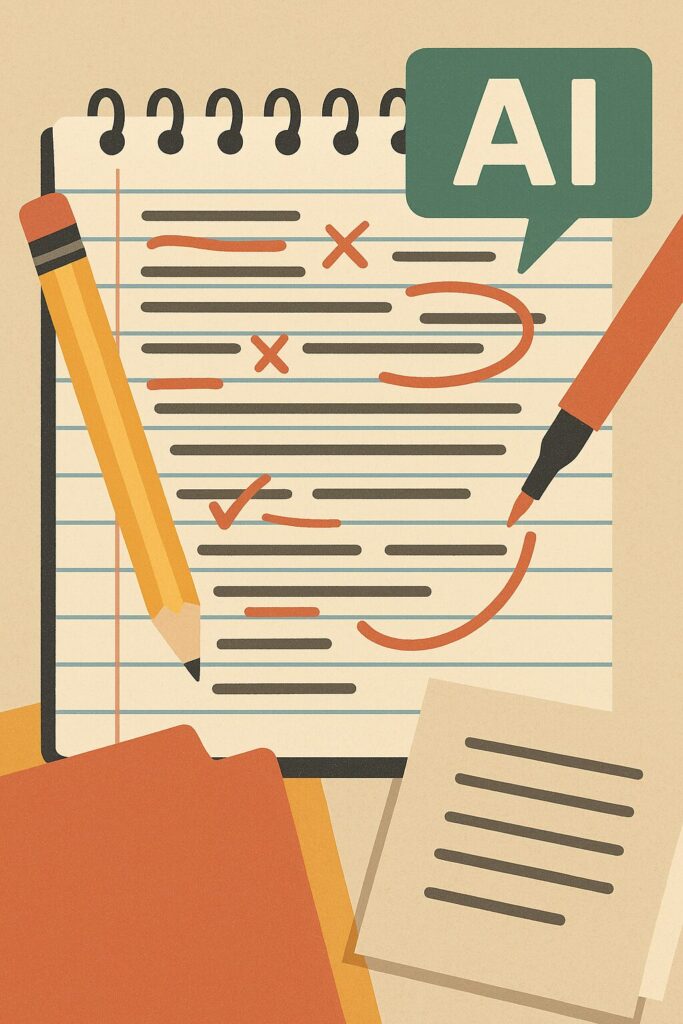
Speaking of using AI to help polish.
One of the most underrated strengths of AI is its ability to help with editing, proofreading, and refining your work. Whether you’re a writer trying to smooth out your grammar or an artist fine-tuning a description for a commission, AI can be a solid second set of eyes.
It doesn’t replace a human editor, but it can definitely help you catch typos, awkward phrasing, or even suggest stronger word choices. It’s like having a creative assistant who’s available 24/7 to help tighten things up. Especially when you’re working solo or feeling burned out, AI can step in to give your brain a breather.
I’ve personally used AI to help organize messy drafts or rephrase tricky sentences quickly, and it’s saved me a ton of time. Just remember, the final say always belongs to you.
Don’t Fear the Technology
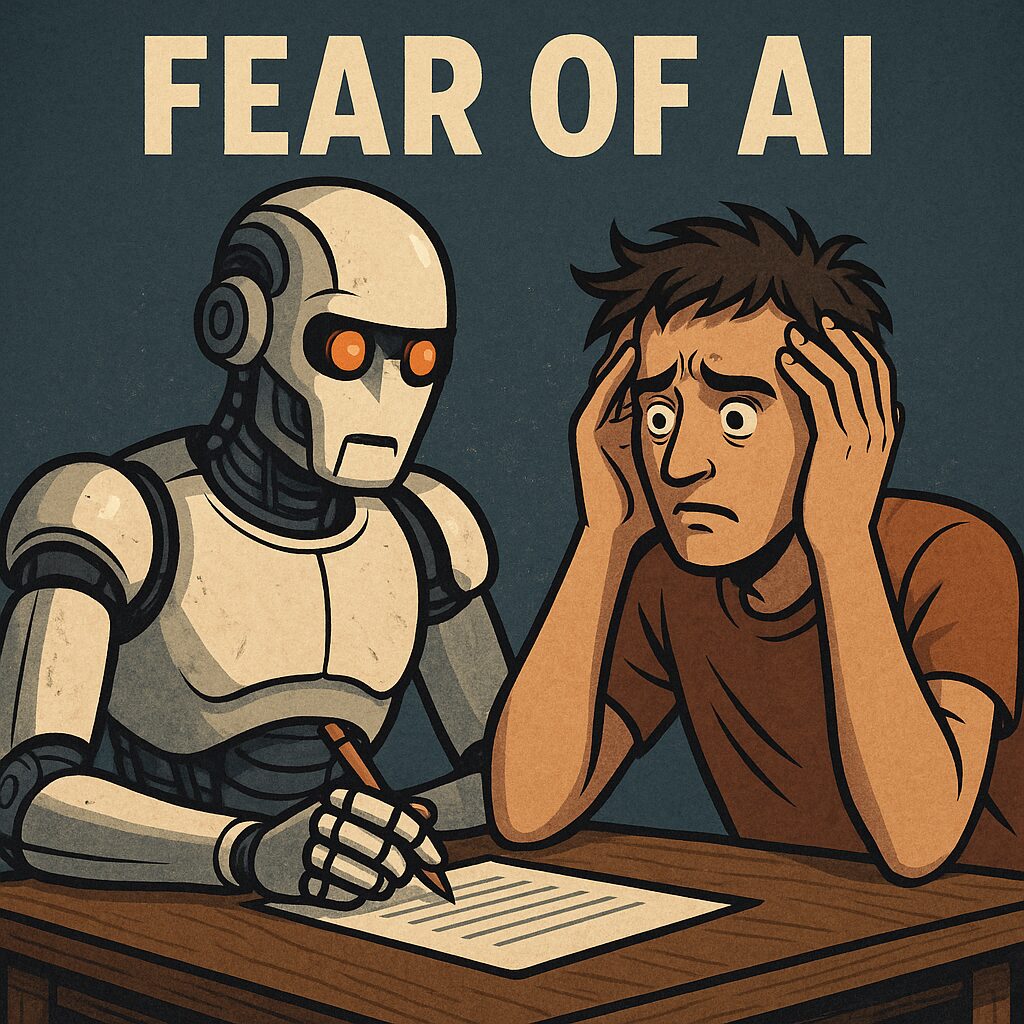
You know, this all reminds me of my childhood. I remember back in the day when digital art was first becoming more mainstream, and there was a huge debate about whether it was “real art.” I had so many arguments with traditional artists who insisted digital artists were cheating and that using software somehow made the art less valid. It was frustrating because digital art takes just as much creativity and skill.
But over time, that stigma faded. People started to understand the value and nuance of digital mediums, and now it’s widely accepted as a legitimate art form. I can’t help but feel like AI is going through a similar growing pain. It’s the next big shift, whether we like it or not.
The good news is that, just like digital art, AI doesn’t have to be a threat. If we take the time to understand it and use it thoughtfully, it can become a powerful addition to our creative toolbox. It’s not here to replace creativity. It can be a partner in it.
I know how overwhelming it can feel. New tools are popping up every day, people are arguing online, and big shifts are happening in creative industries. But honestly, this kind of change isn’t new. Every generation of artists has dealt with some big tech evolution: cameras, computers, digital editing. We’ve always found a way to adapt.
Instead of fearing AI, we can choose to be curious. Learn how it works. Try it out. Decide for ourselves how it fits into our process. Used ethically and thoughtfully, AI can make us more efficient and help us explore things we might not have tried otherwise.
And hey, if your mind instantly goes to the Terminator movies and you’re quietly eyeing your devices for signs of a Skynet uprising, you’re not alone. The fear of runaway AI is baked into pop culture at this point, but thankfully, we’re still firmly in the territory of using AI to explore memes and help brainstorm, not global domination. YET! (DunDunDun~)
Keep the Human Element Alive
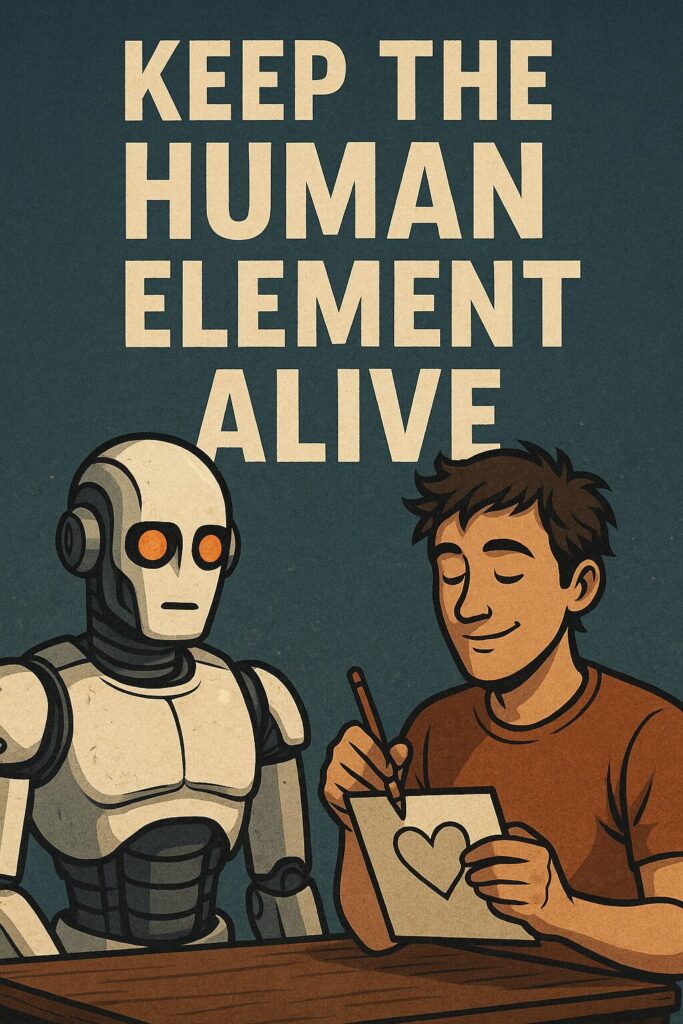
Here’s what I always come back to:
AI can’t feel. It doesn’t cry at a sad scene like me while watching a Chinese drama or laugh at a clever line. It doesn’t remember the first time it fell in love or stayed up late drawing as a kid. We do.
That emotional core? That’s what makes your work meaningful. That’s what connects with people. So even if AI helps you brainstorm or speed things up, don’t lose sight of your own voice. Your story. Your heart. That’s the part that can’t be automated.
Still, beyond our own journeys, there’s a bigger picture worth talking about too.
Acknowledging the Ethical Concerns
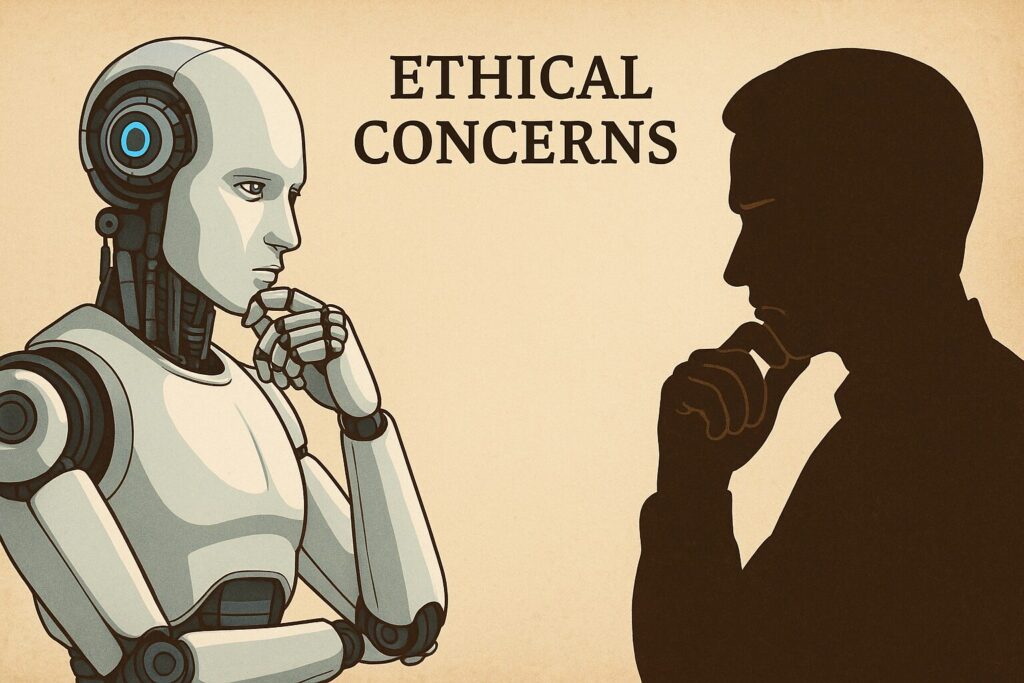
Let’s talk about the elephant in the room. The ethics of AI. A lot of creatives are rightfully concerned that AI is taking work away from real people. Stock images, music, copywriting, even books are being generated by AI without credit to the artists who inspired it. That’s not okay.
We have a responsibility to push for fair use, transparency, and creative rights. This tech is powerful, but it needs to be handled with care. Just because we can use AI to mass-produce content doesn’t mean we should, especially when it comes at the cost of someone else’s livelihood or original voice.
We have to stay mindful. Be the ones who use AI as a thoughtful extension of creativity, not a shortcut that cuts humans out of the picture.
This conversation around ethics and originality also raises an interesting question. What does it mean to “steal” style or influence in art?
Mimicry, Learning, and the Artist’s Journey
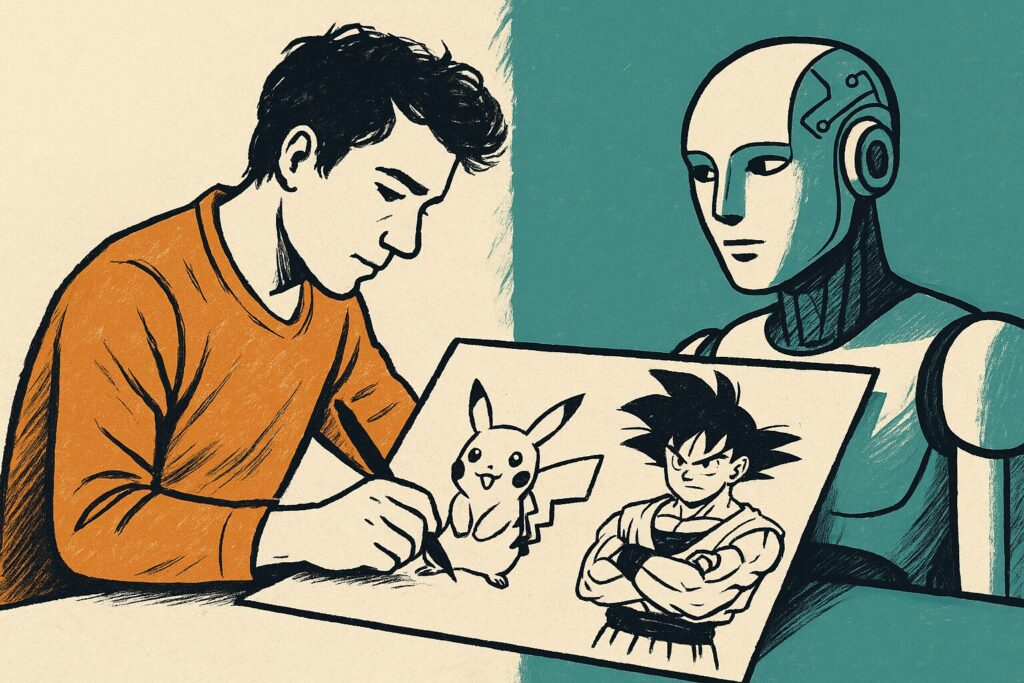
There is one topic that I’ve always found ironic surrounding this topic. When people say AI is “stealing” from real artists by learning their styles and mimicking them. But honestly, that’s kind of how we humans learn too.
When I was younger, I was obsessed with Dragon Ball Z and Pokémon. Those shows lit the fire in me to start drawing. And at first, all I did was copy what I saw, page after page of Pikachu, Goku, and every other character I loved. I studied them and mimicked every line until I could recreate them perfectly. Then, over time, I began to develope my own style based on everything I learned from before.
Was I stealing? I don’t think so. I was learning.
That’s how most of us start. We learn by imitating the things that inspire us. Over time, we take those influences and form something original. AI does something similar. It blends and borrows, but without personal intent. It doesn’t grow from the experience. It doesn’t become something new.
So no, AI isn’t the same as a human artist. Because we evolve. We find our voice. We connect emotionally. We turn mimicry into identity, and that’s where the true difference lies.
Final Thoughts
Before I wrap this up, I just want to say it’s totally okay to be cautious of AI. In fact, as a creative person, I’d even recommend it. Being cautious doesn’t mean being against it. It means staying aware of how it’s used, asking questions, setting boundaries, and making sure our creative fields remain driven by human voices. AI is powerful, and like any powerful tool, it requires responsibility.
But, at the end of the day, AI is just a tool. Whether it helps or hurts your creativity depends on how you choose to use it. It can be a crutch, or it can be a catalyst.
Yes, it’s scary. Yes, it’s changing things. But change isn’t always bad. If we stay true to ourselves, stay open to learning, and stay grounded in our creative values, we can find a way to thrive.
We don’t have to fear the future if we can help shape it.
Let’s adapt, explore, and keep creating in ways only we can.

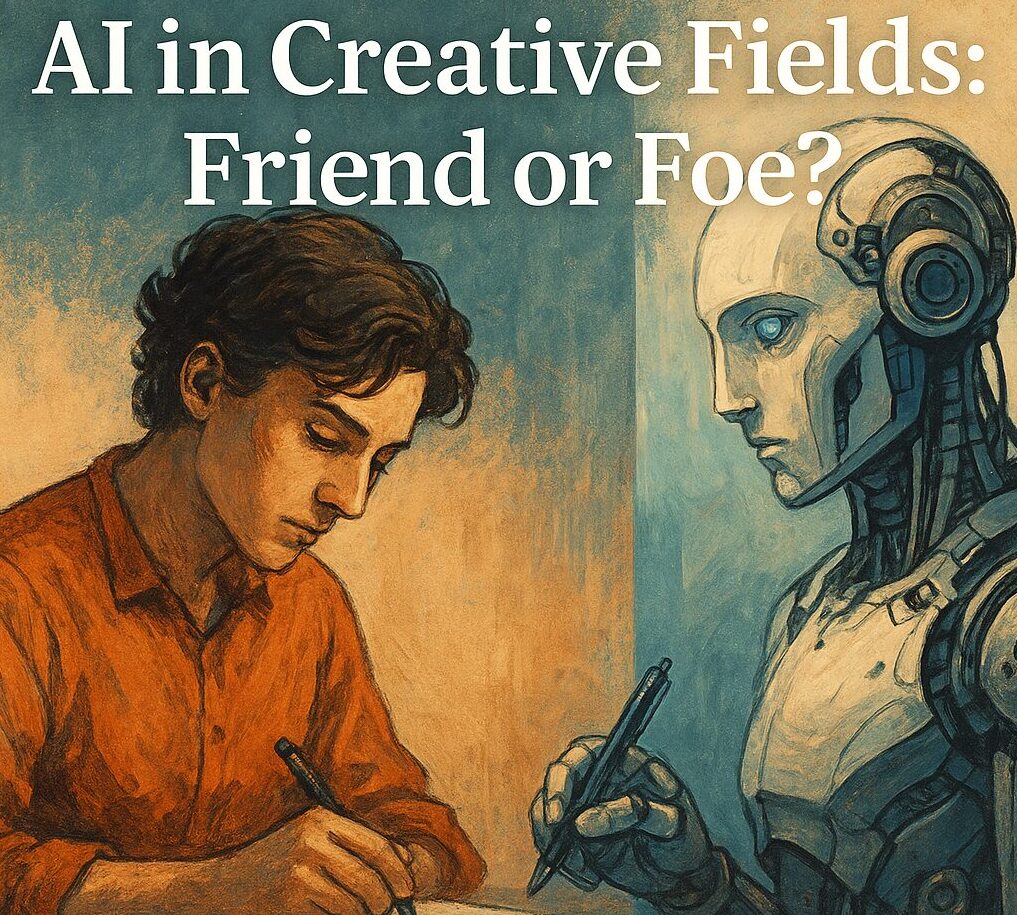
Leave a Reply